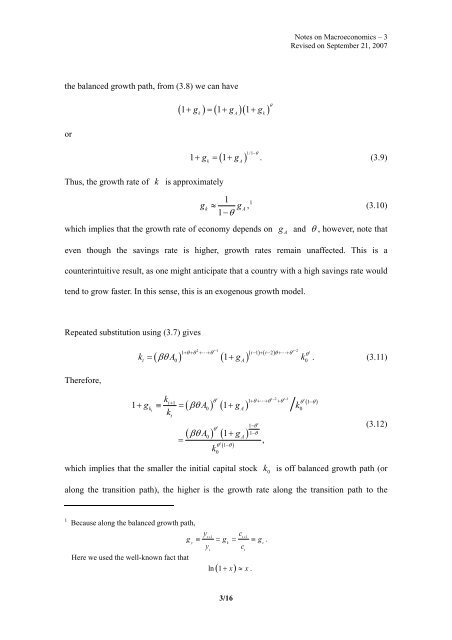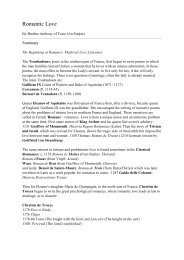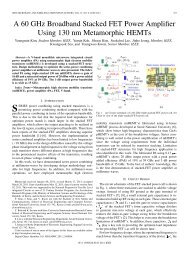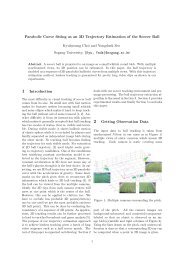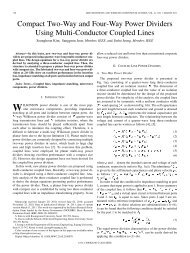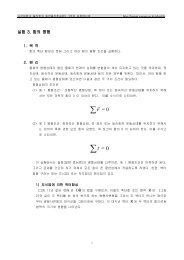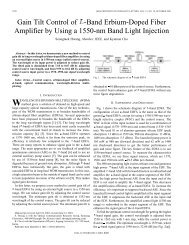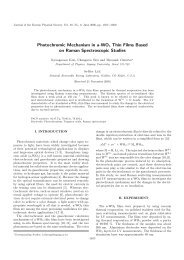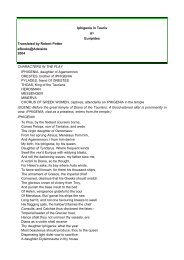Endogenous Growth Model
Endogenous Growth Model
Endogenous Growth Model
You also want an ePaper? Increase the reach of your titles
YUMPU automatically turns print PDFs into web optimized ePapers that Google loves.
Notes on Macroeconomics – 3Revised on September 21, 2007the balanced growth path, from (3.8) we can haveor( 1+ ) = ( 1+ )( 1+)g g g kθkA( g ) 1/11+ g = 1+ . (3.9)kA−θThus, the growth rate ofkis approximately1gk≈ gA, 1 − θ(3.10)which implies that the growth rate of economy depends on and θ , however, note thateven though the savings rate is higher, growth rates remain unaffected. This is acounterintuitive result, as one might anticipate that a country with a high savings rate wouldtend to grow faster. In this sense, this is an exogenous growth model.gARepeated substitution using (3.7) givesTherefore,tt−1 ( ) ( ) ( t 1 ) ( t 2βθ)2 1 t−2+ θ+ θ + + θ − + − θ+ +θ01Ak = A + gtk θ0. (3.11)k( βθ ) ( )tθ( βθ A ) ( 1+g )tθ ( 1−θ)( )k θ θt t−2 t−111 tt+θ + θ+ + θ + θ 1−1+ gk≡ = A0 1+gtA0kt=0k0t1−θ1−θA,(3.12)which implies that the smaller the initial capital stockk 0is off balanced growth path (oralong the transition path), the higher is the growth rate along the transition path to the1 Because along the balanced growth path,y ct+ 1 t+1g ≡ = g = ≡ g .y k cy cHere we used the well-known fact thattln ( 1 + x)≈ x .t3/16


